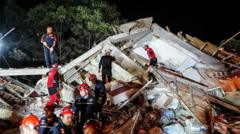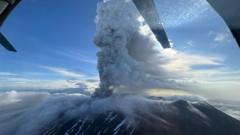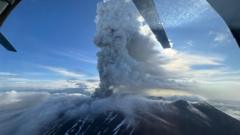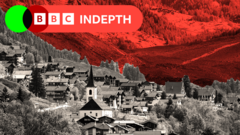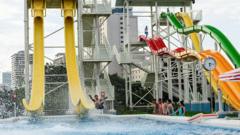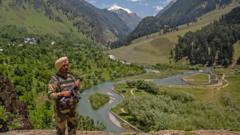Researchers warn of the hidden threat posed by Santorini's volcanic activity, with recent seismic events underscoring the need for precautionary measures.
Could Santorini's Charm Be Threatened by Volcanic Activity?
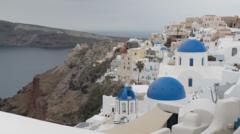
Could Santorini's Charm Be Threatened by Volcanic Activity?
The risks from underwater volcanic eruptions are being tirelessly studied as Santorini's beauty masks a potential danger.
Perched on the picturesque cliffs of Santorini, this Greek island boasts breathtaking views and a thriving tourism industry that is vital for its approximately 11,000 residents. Yet, lurking beneath its idyllic facade is a potentially destructive volcanic threat, sparked by a significant eruption in 1600 BCE that created its famous caldera. In light of recent seismic activity, scientists are now closely examining what could be the island's next big eruption.
Aboard the British royal research vessel RRS Discovery, researchers conducted a thorough investigation into Santorini's underwater volcanoes to gauge the looming hazards of future eruptions. Just weeks before their journey, a series of earthquakes prompted the evacuation of nearly half of Santorini's residents, highlighting the precarious balance between the island's enchanting allure and the seismic dangers lying beneath.
Led by Prof. Isobel Yeo from Britain's National Oceanography Centre, the mission aims to unravel the complexities of underwater volcanoes, most of which remain poorly monitored. “The danger is often underestimated,” she explained while observing engineers prepare an underwater robot for deployment. Although the last eruption occurred in 1950, a significant "period of unrest" was recorded as recently as 2012, making the need for research urgent.
The RRS Discovery's team includes 22 scientists from around the globe, tasked with mapping hydrothermal systems and understanding their relationship with volcanic eruptions. "We've only scratched the surface of what lies beneath," Prof. Yeo remarked, noting that they know more about some celestial bodies than the ocean floor.
The expedition's research will ultimately contribute to the safety and preparedness of Santorini’s residents. Prof. Paraskevi Nomikou, a local geologist involved in the project, emphasizes that the data will inform emergency plans, restricting access to high-risk areas during volcanic activity.
Meanwhile, on the island, local business owners are feeling the sting from recent events. Photographer Eva Rendl expressed concern regarding cancelled bookings following the earthquakes, stating, "It was really scary, and now my business is affected." In contrast, tourists like Janet found solace in updated scientific information that reassured them about their safety.
Amid these challenges, Santorini continues to attract visitors, with couples like Tom and Kristina intentionally planning their wedding next to the volcano. “We wanted to get married by a volcano,” they stated, embodying the island's enduring appeal despite its underlying risks.
As research progresses, the fate of Santorini hinges on the balance between its jaw-dropping beauty and the persistent threat of geological upheaval. For both residents and the tourism sector, understanding these volcanic risks could prove vital for safeguarding the future of this enchanting destination.


